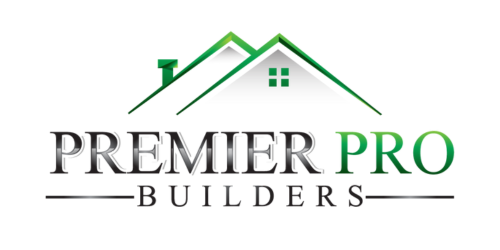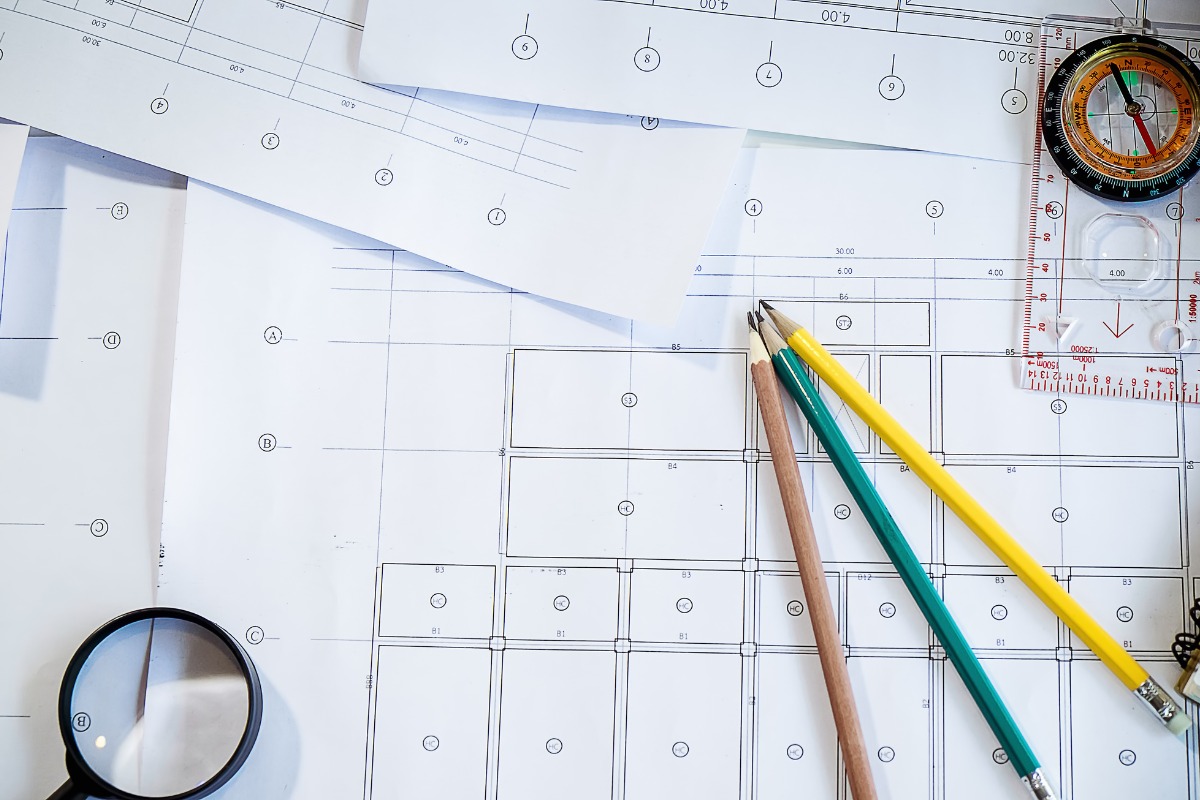Embarking on a new construction project is invariably packed with excitement and potential. However, we can’t afford to overlook the meticulous details—especially when it comes to the critical paperwork involved. Whether we’re prospective homeowners or seasoned contractors, understanding the new construction process is pivotal. The financial commitment is substantial, with the average cost of building a house ranging between $109,312 and $458,547, potentially saving us up to 15% compared to purchasing an existing home. It’s incumbent upon us to stay abreast of the real estate market’s ebb and flow because housing construction rates swing in tandem with these trends. Indeed, the recent cooler market of early 2023 exemplifies a significant decrease in housing starts, signaling a downturn from the previous year’s bustling construction activity. Our agility in managing construction paperwork tips ensures our new construction venture meets its goals without any legal or financial obstacles.
Key Takeaways
- Budget carefully with the understanding that building a new home can lead to considerable savings over buying an existing property.
- Gauge the real estate market’s current climate to anticipate and adapt to the impact on construction timelines and availability.
- Immerse ourselves in the intricacies of construction documentation to navigate through complex legal and regulatory requirements successfully.
- Consider construction paperwork an essential roadmap that guides every step of the new construction process efficiently and legally.
- Maintain an organized, detailed, and accessible documentation system to manage and mitigate potential challenges proactively.
- Strengthen our comprehension of financial commitments by integrating transparent and precise cost analysis into the paperwork.
Understanding the Scope of Construction Paperwork

As we delve into the world of new construction, it’s essential to grasp the extensive scope of documentation that must be navigated for the successful completion of any project. Our construction documents not only form the legal backbone of our ventures but also guide every step from conception to completion. Let’s break down the documentation into its core components to aid in our understanding.
The Role of Documentation in New Construction
The bedrock of any successful construction project is undoubtedly its documentation. From blueprints to binding agreements, each piece serves a pivotal role. These construction paperwork requirements ensure all involved parties have a clear, mutual understanding of the scope, expectations, and legal responsibilities. They also provide a robust defense against any potential disputes, offering a degree of protection for all stakeholders. In essence, good documentation is akin to a master plan that paves the way for a project’s smooth journey.
Key Paperwork Categories for New Construction Projects
To manage the numerous facets effectively, we categorize our construction paperwork checklist into coherent divisions, each with its own distinct focus area.
- Design Documentation
- Blueprints: The architectural designs that outline the visual and structural specifics of our project.
- Engineering Plans: Detailed schematics are critical for the integrity and functionality of the construction.
- Contractual Agreements
- Contracts with Builders: legal agreements specifying terms of work, timelines, and payment structures.
- Supplier Contracts: Ensuring that material procurement is well-documented and transparent.
- Governance and compliance
- Permits: securing the necessary approvals for the project to move forward within legal parameters.
- Inspections: documentation of inspections at various stages for compliance with building regulations and safety codes.
Effective categorization not only streamlines the management of these construction documents but also assures accuracy and legal compliance—critical elements for the project’s ultimate success. This comprehensive approach to documenting every aspect of the process effectively guards against unforeseen challenges and promotes a transparent, efficient progression of the construction project.
Essential Construction Documents to Organise
As we delve into the world of construction project management, it’s clear that the organization of essential documents is not just about keeping papers in order; it’s about constructing a roadmap for successful project completion. Blueprints and design drawings carve out the physical manifestation of our concepts, while attention to building regulations ensures our projects stand on solid ground. Let’s explore these vital documents that serve as the backbone of any construction project.
Blueprints and design drawings
In the detailed expanse of construction project management, blueprints and design drawings are the first steps toward reality. These intricate illustrations provide us with the necessary guidance to ensure that every bolt is tightened and every wall is structurally sound. We consider them our project’s blueprint, literally and figuratively, as they outline the full scope of work that will transform our vision into a standing structure.
Construction Permits and Government Regulations
Securing construction permits is more than a formality; it’s a commitment to adhere to the highest standards set by building regulations. These permits are the gatekeepers of quality and safety, ensuring that each project aligns with local zoning laws and codes. As we navigate government regulations, our efforts in compliance safeguard the project from future legal issues and contribute to the overall well-being of the community. By maintaining our alignment with these standards, we prevent costly interruptions and uphold our promise of excellence.
Tips on New Construction Paperwork

In our quest to excel in construction project management, we understand that a comprehensive approach to handling construction paperwork is not just necessary; it’s critical to our project’s success. To assist you, we’ve compiled a series of construction paperwork tips designed to streamline the document management aspect of your construction projects.
- Organize Documents Logically: A well-structured folder system is essential for easy navigation. Remember, clear labels and logical grouping simplify document retrieval.
- Standardize Naming Conventions: Implementing a consistent naming convention for files is crucial. This simplifies the search process, ensuring that documents are only a quick search away.
- Integrate Construction Management Software: Utilizing software with capabilities like cloud storage and version control can vastly improve your document management workflows.
- Prioritise Document Integrity: Keep your documents safe from unauthorized access and data loss by setting strict access permissions and conducting regular backups.
- Communicate Clearly: Ensure that everyone involved in the project is aware of the document management system in place. Good communication prevents confusion and errors.
- Conduct Regular Reviews: Frequent audits of your document management process can uncover areas for improvement, keeping the system efficient and up-to-date.
Maintaining a laser focus on these practices will not only improve the organization of construction paperwork but will also pave the way for a more successful and streamlined construction project. By following them, we are setting a new standard in construction project management.
Streamlining the Documentation Process
In our continuous effort to enhance efficiency within the construction industry, we understand that improving the documentation process can significantly contribute to the overall success of a project. Embracing modern technology is key to managing essential construction paperwork tips, paving the way for a smoother handling of construction contracts and other critical documents.
Adopting Technology for Efficient Paperwork Management
The introduction of specialized construction document management software, such as eSUB Cloud, is revolutionizing the way we handle our paperwork. This robust solution offers a multitude of benefits that aid in streamlining documentation:
- Centralized storage: All documents are stored in one secure location, accessible to all team members.
- Mobile access: On-the-go access to documentation means that work can continue uninterrupted, regardless of one’s location.
- Version control: With multiple revisions often necessary, a comprehensive version control system ensures everyone is working with the latest information.
- Customizable templates: reduce the time spent on creating documents from scratch and promote consistency across all projects.
These technological advancements are designed to fortify collaboration and communication while securing important documents and scaling the growth of the business.
Standardising File Naming Conventions
Equally important to incorporating software solutions is the establishment of standardized file naming conventions. This organized approach enables us to quickly locate and manage documents, ensuring that every piece of paper, digital or otherwise, has its rightful place in the project lifecycle.
| Document Type | Naming Convention Example | Purpose |
|---|---|---|
| Project Contract | Contract_ProjName_YYYYMMDD | To keep a clear record of the official agreements for each project. |
| Permit Applications | Permit_Type_ProjName_YYYYMMDD | To efficiently track the status of various permits required for the project. |
| Change Orders | ChangeOrder_Num_ProjName_YYYYMMDD | To document and order any adjustments that occur during the construction process. |
| Meeting Minutes | Minutes_Topic_ProjName_YYYYMMDD | For creating a concise and retrievable record of what was discussed and decided upon in meetings. |
By combining smart software solutions with an organized nomenclature system, we can substantially simplify the management of construction paperwork, streamline our workflows, and ultimately focus on the building projects that matter. Let’s continue to build smarter, not harder.
Choosing the Right Construction Contracts

As we delve into the new construction process, one of the primary considerations is the selection of construction contracts that align with both the project’s needs and the legal requirements. Engaging in the right contracts sets the stage for a smooth build, as they serve as the roadmap for the builder-client relationship and are crucial in managing expectations, timelines, and financial aspects.
Understanding Different Contract Types
Contracts in construction can take various forms, each with its own nuances. Standard contracts often adhere to state guidelines and are designed to protect all involved parties with general, widely accepted terms. Alternatively, custom contracts allow for more specific terms tailored to the unique aspects of the project. Knowing the differences and when to employ each is vital for the security and success of your construction endeavors.
Negotiating terms with builders
When it comes to negotiations, our approach targets clarity and fairness. The contracts must encapsulate a detailed description of the work to be done, clear timelines, and a transparent cost structure. This is where having a buyer’s agent with a wealth of experience in construction contracts can be a game-changer, ensuring that your interests are well-represented and safeguarded throughout the negotiation process.
| Contract Type | Features | Best Used For |
|---|---|---|
| Fixed-Price Contract | Set a price for the project, inclusive of all costs. | Projects with a clear scope and predictable costs |
| Cost-Plus Contract | Payment of actual costs, purchases, and other expenses directly from the contractor | Projects whose scope is not clear-cut or subject to changes |
| Time and Materials Contract | Payments are based on labor and materials used. | Small repairs or when the exact extent of the work is unknown |
| Design-Build Contract | A single contract covering both design and construction services | Fast-track projects with the same entity handling design and construction |
| Integrated Project Delivery Contract | Collaborative alliance of people, systems, and practices | Complex projects require close collaboration from all parties. |
Obtaining Construction Permits: A Primer
As we delve into the world of construction, we recognize that acquiring construction permits is a critical step. These permits act as a green light for the initiation of building projects, ensuring adherence to building regulations and local zoning laws. The complexity of the permitting process can vary widely depending on the project’s location, but awareness and understanding of this process are fundamental to avoiding project setbacks.
Typically, securing permits involves several layers of approval, each designed to confirm that the project plans are in harmony with public welfare, safety, and structural integrity. In our experience, to smoothly navigate these requirements, we recommend procuring professional assistance from individuals well-versed in the complexities of construction law and procedures, such as architects and engineers.
Compliance is vital, and keeping up with permit stipulations not only demonstrates a commitment to safe building practices but also reflects a project’s legitimacy. Below, we have outlined the key steps and considerations to guide you through the permit application process:
- Preparing the necessary documentation: This includes detailed blueprints, site plans, and other required construction documents.
- Understanding the local jurisdiction requirements: Each municipality has its own unique set of codes and standards that must be meticulously followed.
- Applying: This is typically done through the local building department or a related governmental agency.
- Responding to any queries or requests for additional information: Prompt and thorough responses can prevent delays in the approval process.
- Receiving and maintaining the permit: Once granted, it’s crucial to keep the permit on-site and readily accessible throughout the construction project.
We cannot overstate the importance of this step in the construction process. To illustrate the standardized requirements most building projects are subject to, we’ve provided a detailed table below highlighting key permit considerations and their typical compliance checks:
| Permit Consideration | Compliance Check | Typical Requirement |
|---|---|---|
| Zoning | Property boundaries, land use | Adherence to area-zoning laws |
| Structural Safety | Strength of materials, structural design | Alignment with safety codes |
| Utility Connections | Water, sewage, electricity, gas | Approval from utility departments |
| Environmental Impact | Resource use and ecological effects | Compliance with environmental regulations |
| Accessibility | Entrances and facilities for disabled persons | Conformity to ADA standards |
| Fire Safety | Alarms, emergency exits, and fire-resistant materials | Meet fire department regulations. |
Remember, while this table gives a snapshot of typical requirements, we can differ vastly from one location to another. Therefore, it’s always prudent to consult with local experts in the field of construction for the most accurate and current information.
Our goal as we march forward is to provide you with a deeper understanding of the not-so-talked-about but exceedingly important aspects of constructing a new edifice—the lawful and safe way. It is our collective responsibility to ensure that each step of the construction journey, particularly the securing of construction permits, is approached with the gravity it deserves.
Navigating building regulations and compliance

In the realm of construction, aligning with building regulations and upholding compliance are not just best practices; they are essential to the integrity and success of our projects. We recognize that this landscape is ever-changing, prompting us to maintain vigilance and ensure that we are not just current but ahead of the curve concerning local and national construction mandates.
Staying up-to-date with local regulations
Our team is committed to mastering the construction paperwork checklist, which acts as not only our guide but also our safeguard against the shifting sands of local regulations. Whether we’re dealing with urban zoning ordinances or navigating rural building codes, our approach to construction paperwork requirements leaves no stone unturned and no update unnoticed.
Ensuring Compliance with Environmental and Safety Standards
To honor our dedication to safety and the environment, we place a premium on our construction paperwork requirements. This involves an immersive and ongoing education in environmental advocacy and worker safety protocols. It’s not just about adhering to standards—it’s about setting them within our industry.
| Compliance Category | Details to Consider | Documentation to Maintain |
|---|---|---|
| Structural Integrity | Adherence to load-bearing capacities and the use of approved materials | Engineering reports, load calculations |
| Fire Safety | Installation of alarms, fire-retardant materials, and safe exits | Fire safety plan and inspection reports |
| Accessibility | Conforming with ADA standards for accessibility for all individuals | ADA compliance certifications, accessibility layouts |
| Environmental Impact | Eco-friendly practices and proper waste disposal | Environmental impact assessments and waste management plans |
| Worker Safety | Usage of safety gear and training for hazardous conditions | OSHA training certificates and safety procedure manuals |
Ultimately, our adherence to a rigorous construction paperwork checklist not only ensures our projects stand strong against the winds of scrutiny but also confirms our unwavering commitment to constructing spaces that are safe, sustainable, and reflective of the communities they serve.
Construction Project Management: A Checklist
In the realm of construction project management, our effectiveness hinges on the rigor of the checklists we craft. These comprehensive checklists encapsulate the breadth of the construction journey, from the spark of the concept to the final walkthrough. As relentless advocates of sound management, we ensure our checklist is not merely a formality but the lifeblood of project execution. It guarantees our adherence to schedules, budget constraints, and the impeccable standards that define our work.
Our construction paperwork checklist is tailored to outline each phase of development with unfaltering precision. We impeccably map out every stage, from the crucial pre-construction protocols and funding arrangements to the seamless orchestration of teams and in-depth risk evaluation. Embracing regulatory conformance with tenacity, we pursue compliance as if it were the cornerstone upon which our projects rest. This checklist serves not just as a methodical guide but also fortifies our project’s infrastructure, ensuring accountability and open channels of dialogue among all stakeholders.
As we pursue excellence in our construction ventures, our checklists are dynamic instruments of management—scalable, adaptable, and relentlessly updated to mirror the pulse of progress. We serve as conduits for clarity in a region that is frequently rife with complexity, allowing us to gather our resources and guide each project to a successful conclusion. With this steadfast framework, we cultivate an ecosystem where success is not an aspiration but an expected outcome.
FAQ
What is the importance of documentation in new construction?
Documentation is crucial in the new construction process as it provides a detailed outline of project specifics, helps ensure compliance with local building regulations, and establishes a clear framework to avoid potential legal and regulatory issues.
What categories should be included in a construction paperwork checklist?
A construction paperwork checklist should include design plans, contractual agreements, and compliance documents with government regulations. By categorizing paperwork, stakeholders can remain informed of their duties and the project’s development.
Which construction documents are essential for project organization?
Essential construction documents include blueprints and design drawings that guide the building process. It also involves securing the necessary construction permits and adhering to government regulations to ensure the project is legal and meets safety standards.
What are some key tips for managing construction paperwork?
Key tips include maintaining a logical folder structure, employing consistent naming conventions for documents, making use of construction management software for storage and version control, restricting document access, and ensuring regular backups and updates.
How can technology streamline the documentation process in construction?
Technology like construction document management software provides centralized storage, mobile access, version control, and templates for documents, enhancing team collaboration, communication, and document security.
Why is choosing the right construction contract important?
Selecting the appropriate construction contracts is vital for protecting the interests of all parties involved in the building process. It ensures that the agreements are clear, fair, and detailed regarding project scope, timeline, and costs.
What is the function of construction permits in the building process?
Construction permits are official authorizations that confirm a building project complies with local building codes, zoning laws, and regulations. This compliance ensures the construction project is legit and meets community safety and standard prerequisites.
What strategies should one adopt to stay updated with building regulations and ensure compliance?
Staying updated with building regulations involves diligent research, attending industry-related events, subscribing to legal updates, and possibly consulting professionals to understand the implications of the law on construction projects, thereby ensuring ongoing compliance.
How does a construction project management checklist aid in managing a construction project?
A construction project management checklist acts as a roadmap through various project phases. It ensures that deadlines, budgets, and quality standards are adhered to. It covers planning, financing, coordination, risk management, compliance, effectively tracking progress, and facilitating stakeholder communication.

